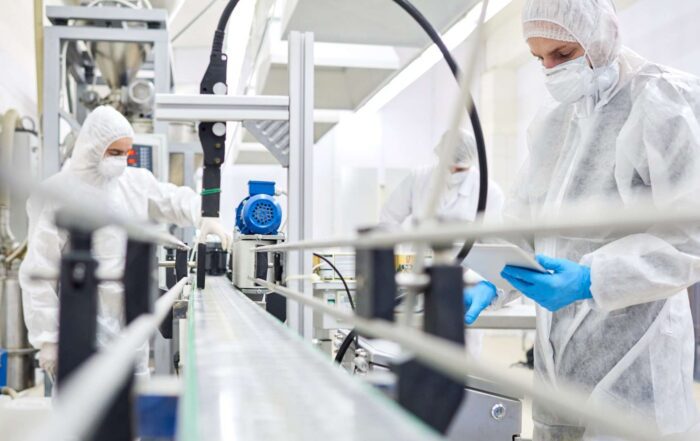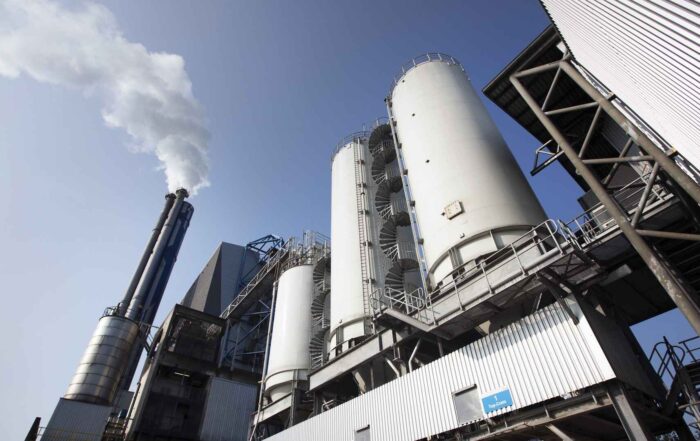MaxGrip consultants have over 25 years of experience in implementing Reliability Centered Maintenance (RCM) around the globe. Our approach drives long-term results in asset reliability, efficiency and minimizing costs.
Our clients often approach us to help optimize their maintenance, reliability, and asset management strategies, whether it’s reducing Total Cost of Ownership (TCO), better safety and environmental integrity or to improve asset performance. We understand that your people are the key in sustaining success; our consultants blend domain expertise with experience in change management to achieve results.
What is Reliability Centered Maintenance (RCM)?
Reliability-Centered Maintenance is a systematic approach to evaluating and optimizing maintenance strategies for physical assets. The primary objective is to ensure that assets continue to perform their intended functions safely and efficiently. RCM involves a comprehensive analysis of failure modes, effects, and criticality, and it recommends appropriate maintenance tasks based on these analyses. The methodology for the best maintenance strategy is rooted in the principles of preserving system functions, identifying failure modes, and prioritizing maintenance efforts based on the impact of failure.
Instead of a single maintenance strategy, RCM is the optimal combination of reactive, preventive, predictive and condition-based maintenance. The advantage comes not from using these maintenance strategies independently, but by integrating them based on asset criticality and other failure management modes. Smaller assets that are non-critical are replaced with reactive maintenance while assets with random failure patterns or PM induced failures are maintained with condition-based maintenance. In this way, the best maintenance strategy is implemented.
What are The Goals of an RCM Program
RCM aims to be efficient and minimize costs by being selective in its application.
- Boost asset performance: RCM enhances asset performance by optimizing maintenance strategies, thereby increasing reliability, decreasing downtime and reducing operational costs. Its approach leads to improved safety, sustainability, and overall asset effectiveness.
- Cut down on costs: RCM improves workforce efficiency (reducing workload by cutting out unnecessary tasks), asset reliability and availability resulting in reducing costs.
- Improve safety: RCM aims to understand the consequences of each failure mode and actively implement measures to prevent them. In addition to minimizing failures, the process of prioritizing maintenance also ensures the readiness of essential safety mechanisms.
- Lengthen asset lifespan: It contributes to extending the lifespan of assets by focusing on proactive and optimized maintenance strategies. By identifying and mitigating the most critical failure modes, RCM enhances asset reliability and reduces the frequency of unplanned outages, thereby prolonging the asset’s operational life.
RCM Advantages
The adoption of a Reliability-Centered Maintenance program offers a multitude of advantages that go beyond merely keeping equipment operational. These benefits are multifaceted, impacting various areas of an organization’s operations. Here are some of the key advantages:
- Cost Effectiveness
RCM focuses on performing the right preventive activities, thereby reducing unnecessary costs. This approach minimizes both direct costs, like labor and parts, and indirect costs, such as downtime and lost production. - Promotes internal collaboration
RCM fosters internal collaboration by involving multiple departments and stakeholders in the asset management process. It requires input from engineering, operations, maintenance, and safety teams to comprehensively analyze failure modes and determine the most effective preventive maintenance strategies. This collaborative approach ensures that all aspects of asset performance and risk are considered, leading to more informed and unified decision-making. - Improved Asset Reliability and Longevity
By concentrating on the condition and criticality of assets, RCM enhances their reliability and extends their operational lifespan. This leads to fewer breakdowns, equipment failure and less unplanned maintenance, contributing to long-term cost savings. - Enhanced Safety
RCM includes a thorough risk assessment component that identifies potential safety hazards. By proactively addressing these risks, the program contributes to a safer work environment. - Operational Excellence
The systematic approach of RCM aligns maintenance activities with organizational goals. This results in improved performance metrics and contributes to achieving operational excellence. - Resource Optimization
RCM allows for better allocation of maintenance resources. By focusing on critical assets and condition-based maintenance, organizations can deploy their manpower and materials more efficiently. - Compliance and Standardization
RCM often leads to procedures that are in compliance with industry standards and regulations, making it easier for organizations to meet legal requirements and pass audits.
By understanding and leveraging these advantages, organizations can achieve a more effective and sustainable maintenance strategy, leading to improved bottom-line results.
Key Components of an RCM Program
By integrating these components, an Reliability-Centered Maintenance program can effectively manage the complexities of modern asset management, ensuring reliability, reducing costs, and enhancing overall operational efficiency.
- Risk Assessment: This is often part of the initial system selection and definition, as well as the failure effect analysis. Understanding the risks helps in prioritizing which assets or systems to focus on.
- Failure Mode and Effects Analysis (FMEA): This is directly related to the Failure Mode Identification and Failure Effect Analysis steps in the RCM process.
- Criticality Analysis: This can be integrated into the System Selection and Definition step, as well as during Failure Effect Analysis to prioritize failure modes based on their impact.
- Preventive Maintenance Planning: This corresponds with the Maintenance Task Selection step, where preventive tasks are chosen based on the failure modes and their criticality.
- Condition Monitoring: This is an ongoing activity that aligns with the Implementation and Monitoring step, ensuring that the state of assets is continuously or periodically assessed.
- Performance Metrics: Key Performance Indicators (KPIs) are generally established during the Implementation and Monitoring phase to gauge the effectiveness of the RCM program.
- Review and Adjustment: This is an extension of the Implementation and Monitoring step, ensuring that the RCM program remains effective and adapts to changing conditions.
Why Partner with MaxGrip for your RCM Strategy
- With over 25 years of experience in maintenance and asset performance management, we have an impressive track record of RCM strategy creation and implementation.
- Our customer cases have proven results, think of our RCM projects at TenneT and San Francisco Public Utilities Company (SFPUC).
- We are an agnostic consultancy firm; our consultants have experience in working in many different EAM and APM systems and tools.
- We are local domain experts with a global reach; we work around the globe with offices on three continents.
- Our consultants are experienced in realizing organizational change. We recognize that the internal adoption of a new way of working is crucial for sustainment. MaxGrip has a change management approach that makes changes stick and harmonizes the workforce.
Case Study
Deployment of Reliability Centered Maintenance at TenneT
Navigating RCM Implementation in Eight Steps
Leveraging our 25 years of industry experience, we offer a structured, seven-step approach to RCM that begins with an in-depth assessment of your current maintenance strategies.
Four Pillars for a Successful RCM Program
Embarking on an RCM journey? It might seem daunting, but you can navigate the complexities by sticking to three foundational principles. Here they are:
- Organizational change
Organizational change is a critical pillar of a successful Reliability-Centered Maintenance (RCM) program for several reasons. First, the adoption of RCM often requires a shift in mindset from reactive to proactive maintenance strategies, necessitating organizational buy-in. Second, effective RCM implementation involves cross-functional collaboration, which can only be achieved through organizational alignment. Third, change management ensures that the workforce is adequately trained and equipped to adapt to new maintenance procedures and technologies. Lastly, organizational change facilitates the scalability of RCM maintenance programs, allowing for continuous improvement and adaptation to evolving business needs. This alignment with organizational change is essential for achieving measurable and sustainable improvements in asset performance. - Systematic Risk Management
Kick things off with a deep dive into the risks tied to your assets and their potential failure modes. This is where a robust risk assessment comes into play, often as part of your Failure Mode and Effects Analysis (FMEA). It’s your roadmap for prioritizing which maintenance tasks need attention first. By getting a handle on the risks, you can channel your resources where they’ll make the most impact. - Data-Driven Decision Making
Don’t just go with your gut; let the data guide you. Collect all the info you can get your hands on—operating conditions, past failures, performance metrics, you name it. This data-driven approach ensures that your chosen preventive maintenance tasks are both spot-on and effective. Plus, it sets the stage for establishing Key Performance Indicators (KPIs) to gauge how well your RCM program is doing. - Continuous Improvement
Think of RCM as a marathon, not a sprint. It’s all about the long game, which means you’ve got to be committed to ongoing improvement and adept failure management techniques. Keep tabs on how your assets are doing, assess the effectiveness of your maintenance tasks, and tweak your plans based on what the data tells you. Regular budget reviews and adjustments are part and parcel of keeping your RCM program agile and optimized.
What Our Clients Say
As a result of the RCM study, MaxGrip identified gaps and opportunities to increase reliability. 349 assets were reviewed under the risk analyses – reviewing their failure modes, ranking their failure criticality, and finalizing mitigating actions. Thirty-five single action and mitigation recommendations resulted from the RCM study, and analysis of Job Plan durations provided valuable insight into labor demand and equipment downtime.
Additionally, an optimized preventative maintenance (PM) strategy led to a reduction in PMs by 34 percent. Implementing this maintenance strategy resulted in a 27 percent reduction in labor hours and a yearly savings of $54,000.
– The San Francisco Public Utilities Commission (SFPUC) –
Frequently Asked Questions About Reliability Centered Maintenance
What is the ROI of implementing an RCM program?
Wondering about the financial upside of diving into an RCM program? The ROI can differ based on a host of factors—industry type, the assets you’re dealing with, and your starting point in terms of maintenance practices. Most organizations see a range of financial and operational perks that make the ROI a compelling story.
Cost Savings
- Reduced Downtime: A well-oiled RCM program cuts back on those pesky unplanned outages, saving you downtime costs.
- Optimized Maintenance Costs: RCM zeroes in on preventive and condition-based maintenance, helping you dodge unnecessary routine tasks and save on labor and materials.
- Extended Asset Life: Keep your assets in tip-top shape for longer, meaning fewer costly replacements down the line.
Operational Efficiency
- Improved Asset Reliability: RCM fine-tunes your assets so they do their job, and do it well.
- Increased Productivity: Fewer hiccups mean smoother operations and a bump in overall productivity.
Risk Mitigation
- Enhanced Safety: A solid RCM program spots safety risks early on, helping you dodge potential liability costs.
- Regulatory Compliance: Stay on the right side of the law by ensuring your assets meet or even exceed regulatory standards, steering clear of fines and legal headaches.
Quantifying ROI
To put a number on the ROI, you’ll want to weigh the total costs of getting your RCM program up and running against the financial benefits you reap. The formula usually looks something like this:

How does RCM align with Industry 4.0 solutions?
Reliability-Centered Maintenance and Industry 4.0 are highly complementary, each enhancing the effectiveness of the other. Here’s how RCM aligns with Industry 4.0 solutions:
Data Integration and Analytics
Industry 4.0 relies heavily on data analytics, and RCM is no exception. The use of advanced analytics tools can make the FMEA and risk assessment components of RCM more accurate and insightful. Data from various sources such as a CMMS/ EAM system, ERP system, SCADA system, can be integrated to provide a holistic view of asset health.
Predictive Maintenance
Predictive maintenance aligns closely with the RCM principle of condition-based monitoring. Sensors and other IoT devices can continuously monitor asset conditions, providing real-time data that can be used to predict equipment failures before they occur.
Automation and Decision Support
Industry 4.0 technologies can automate many of the routine tasks associated with maintenance, such as data collection and computerized maintenance management system functions and even some repair activities. This automation supports the RCM process by making it more efficient and reducing the likelihood of human error. Decision support systems can also provide maintenance recommendations based on complex algorithms, further enhancing the RCM process.
Real-time Monitoring and Feedback
The real-time monitoring capabilities of Industry 4.0 technologies provide immediate feedback on the effectiveness of the preventive maintenance programs and activities, which is crucial for the continuous improvement component of RCM.
Enhanced Safety and Compliance
Advanced monitoring and analytics can also improve safety and ensure compliance with regulatory standards, both of which are key concerns in RCM.
Scalability and Flexibility
Industry 4.0 solutions are designed to be scalable, allowing for easy expansion or modification. This scalability makes it easier to apply RCM principles across a wide range of assets and systems, from individual machines to entire production lines.
What are the key performance indicators (KPIs) for measuring the success of an RCM program?
Key Performance Indicators (KPIs) are essential for measuring the success of a Reliability-Centered Maintenance program. They provide a quantifiable way to evaluate the effectiveness of the program and identify areas for improvement. Here are some commonly used KPIs:
Financial Metrics
- Cost Savings: Measures the reduction in maintenance costs compared to a baseline period before RCM implementation.
- Return on Investment (ROI): Calculates the financial gains relative to the total cost of the RCM program.
Operational Metrics
- Equipment Availability: Measures the percentage of time that assets are available for use.
- Mean Time Between Failures (MTBF): Calculates the average time between asset failures.
- Mean Time to Repair (MTTR): Measures the average time taken to repair an asset after a failure.
Quality Metrics
- First Time Fix Rate: Measures the percentage of repairs completed successfully on the first attempt.
- Compliance Rate: Tracks the percentage of maintenance tasks completed in compliance with regulatory standards.
Safety Metrics
- Safety Incident Rate: Counts the number of safety incidents related to maintenance activities.
- Near Miss Reporting: Tracks the number of near misses that could have resulted in a safety incident.
Efficiency Metrics
- Work Order Completion Rate: Measures the percentage of work orders completed within a specified time frame.
- Resource Utilization: Evaluates how efficiently resources like manpower and materials are used in maintenance activities.
Customer-Centric Metrics
- Customer Satisfaction: Measures the level of satisfaction among internal or external customers who rely on the maintained assets.
Downtime Impact on Customers: Evaluates how maintenance activities and asset availability affect customer operations or experience.
What are The Differences Between Risk Based Maintenance And Reliability Centered Maintenance?
Risk-Based Maintenance (RBM) and Reliability-Centered Maintenance are both systematic approaches to asset maintenance, but they differ in their focus, methodology, and application. Here are some key differences:

What is the difference between reliability centered maintenance and TPM?
Reliability-Centered Maintenance and Total Productive Maintenance (TPM) are both maintenance methodologies aimed at improving asset performance and reliability. However, they differ in their focus, scope, and implementation strategies. Here’s a comparison:

What is the RCM maintenance strategy?
The Reliability-Centered Maintenance strategy is a systematic approach to developing a tailored maintenance program for assets within an organization. It aims to ensure that assets continue to perform their intended and required functions in their operational context, while optimizing maintenance costs and improving safety.
Meet the Organizations Already Boosting Their Performance with MaxGrip
$45mm USD
risk reduction
Improved
Budgeting and reporting





